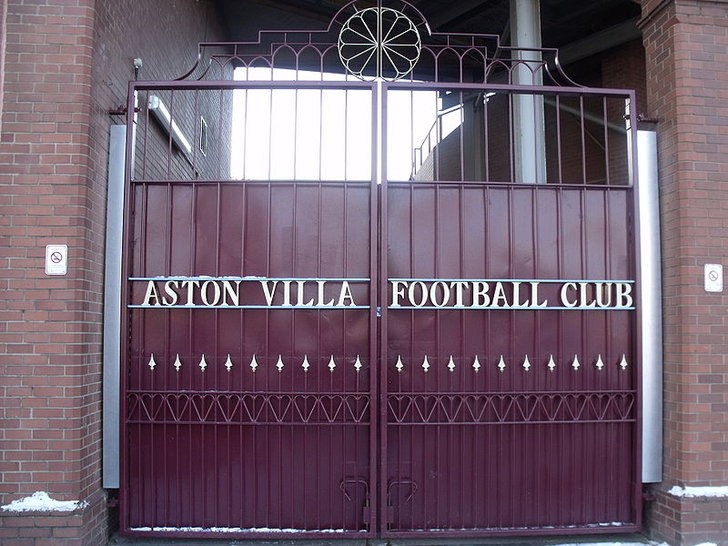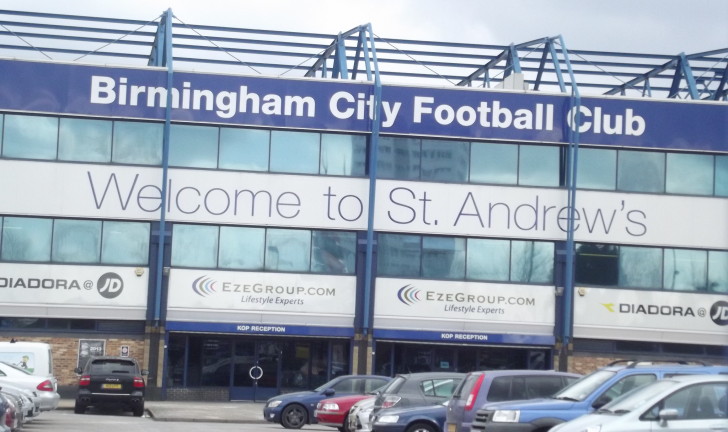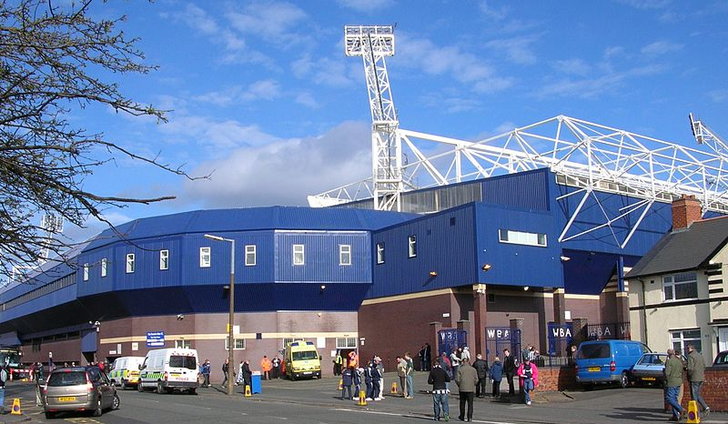
We’ve already discussed the fact that rivalries between clubs in the same city are about as fierce as they can get, but what happens when there’s another club not far away vying for attention?
To consider this we have to relax our rules as to what constitutes a club being ‘in the same city’, given that West Bromwich Albion are not based in Birmingham but are actually based in…West Bromwich. Even so, there’s no been love lost between them and their local rivals, nor with Wolverhampton Wanderers for that matter.
So how many top teams does Birmingham have within its borders? The strict answer to that question is two, with Birmingham City and Aston Villa both located not far from the city centre. If you broaden things out a little bit to discuss the Midlands, however, you bring the other two teams that we’ve just mentioned.
On the one hand it’s important to be reasonably strict with boundaries or else we could have combined Liverpool and Manchester into one article; whilst on the other hand in a conversation about the North-South divide no one really wants the Midlands, so we should talk about it separately.
{module Maps – Cities – Birmingham}
Football Stadiums in Birmingham
| Stadium | Capacity | Team | League |
|---|---|---|---|
| Aggborough Stadium | 6,444 | Kidderminster Harriers | National League North and South |
| Damson Park | 5,500 | Solihull Moors | National League |
| Molineux | 31,750 | Wolverhampton Wanderers | Premier League |
| Poundland Bescot Stadium | 11,300 | Walsall | League Two |
| St Andrew’s | 29,409 | Birmingham City | League One |
| The Hawthorns | 26,688 | West Bromwich Albion FC | Championship |
| Villa Park | 42,640 | Aston Villa FC | Premier League |
Aston Villa – Villa Park (2.26 Miles to The Bullring)

When all is said and done, the rivalry between Aston Villa and Birmingham City is based on little more than proximity. The truth of the matter is that Aston Villa are a more successful football club than the Blues, notably by the fact that the Villa have won the same number of European Cups as the entirety of the city of London. Aston Villa was established as a club in 1874, one year before City, three years before Wolves and four years before the Baggies. They first played against Birmingham City, then known as Small Heath Alliance, in 1879 and when the two teams go head-to-head it’s a battle known as the Second City Derby.
Despite the presence of a hooligan element at both football clubs during the 1970s and especially the 1980s, there have never really been any major clashes between two sets of supporters. That’s not to suggest that they like each other, with no love lost between them at the best of times, but their relationship is more like Liverpool and Everton than it is West Ham and Millwall. As with the Merseyside clubs, supporters of both teams can often come from within the same family, which causes tempers to be dampened somewhat. An example of this came in 1925 when Villa signed Thomas (Tom) “Pongo” Waring, a well-known player of the time. He made his debut in a reserve match against City and 23,000 people turned up to watch him play.
Whilst Villa’s games against City are known as the Second City Derby on account of the fact that Birmingham is considered to be the Second City in England after London, matches against West Brom are given the more general name of the West Midlands Derby. Their rivalry was arguably at its fiercest at the end of the 1970s and the start of the 1980s, when the Baggies gained promotion back to the top-flight and both teams went head to head for the title. West Brom never managed to win it during that era, only having one First Division title to their name that they won in 1920. Villa, meanwhile, won the title in 1981 and the European Cup in 1982.
Birmingham City – St. Andrews (1.16 Miles to The Bullring)

Continuing the similarities between Villa and Birmingham City and Liverpool and Everton, the Blue half of Birmingham has been less successful than the claret side over the years. They have never won the top-flight in England and the closest they’ve come to winning the FA Cup was when they finished as runners-up in both 1931 and 1956. They’ve won the League Cup twice, though, managing the feat in both 1963 and 2011. They also narrowly missed out in 2001 when Liverpool won it as part of their treble that season.
The proximity of the club to the city centre means that many City fans consider the Blues to be the ‘true’ club for the city of Birmingham. This is also part of the reason for their strong rivalry with Aston Villa as opposed to either West Brom or Wolves. That’s not to suggest that the Blues don’t enjoy getting one over on their near rivals, of course. It’s just that the intensity burns less brightly for them when facing either the Baggies or Wolverhampton Wanderers. That is, to a large extent, why it’s so interesting to consider the rivalry of the four teams together. Is how close teams are to each other enough of a reason alone to foster an intense dislike?
Rather than distance being the problem, it’s far more likely that familiarity has bred this particular form of contempt. Ironically it was the sanitised world of the Premier League that saw violence mar matches between City and the Villans the most, with Birmingham’s promotion to the newly formed league in 2002 leading to clashes between both sets of fans ahead of the two derbies that year. To some extent that might have been because the two sides hadn’t had to play each other for fifteen years and the rivalry had therefore been allowed to brew. Regardless of the reason, City fans simply do not see either West Bromwich Albion or Wolverhampton Wanderers as their main rivals.
West Bromwich Albion – The Hawthorns (3.64 Miles to The Bullring)

Again, though, that’s what makes football rivalry so fascinating. More often than not it is the relative success of one side over another that makes one set of supporters grow a disdain for the other. West Brom supporters would consider their club to be as large and successful as Wolverhampton Wanderers, yet in reality Wolves have won three top-flight titles compared to the Baggies’s one. If the Baggies had won the top-flight more recently than their Black County rival then that might explain their feeling of superiority, but that isn’t the case. West Brom, as we’ve already mentioned, won the title in 1920 and Wolves won it in 1954, 1958 and 1959.
Perhaps the reason the Black Country Derby is still so hotly contested today, despite the two teams spending most of the new millennium in different leagues from each other, is that it is one of the oldest local derbies in world football. Both teams were part of the English Football League when it was formed in 1888, after all. To date the clubs have gone head-to-head 160 times in all competitions. West Brom have a slight advantage, having won 64 of those games compared to the 53 won by Wolves. The Baggies probably enjoy winning against Aston Villa more than Birmingham City, but it’s the victories over Wolverhampton Wanderers that give them the most pleasure.
Wolverhampton Wanderers – Molineux (12.53 Miles to The Bullring)

For Wolves, it’s always been a little bit of a case of being on the outside and looking in. Their home ground is about twelve and a half miles from the centre of Birmingham, which is a significant difference when compared to the three miles or so that West Brom need to travel. In the early days, Wolves were one of the most successful sides in the Midlands, winning three top-flight titles and four FA Cups all by the end of 1960. Things dried up a bit after that, however, and they have won just two League Cups since then.
It is probably this lack of success that has put Wolves to the bottom of the pile in terms of rivalries. The club’s distance from Birmingham city centre means that they’ll never be seen as pure rivals, of course, but for a time in the 1950s and 1960s the games that they played against Aston Villa and Birmingham City were still fiercely fought over. Wanderers would still consider the Baggies to be their ultimate rivals, though, with a football pools poll once claiming it to be the strongest rivalry in the English game. Countless teams would probably have something to say about that, but the 60,945 record attendance for a game between the two teams in 1950 is hard for even the most hardcore of fans to beat.
Aston Villa’s relegation from the Premier League in 2016 meant that they would be in the same division as both Wolves and Birmingham City for the first time in a long while. It would be interesting to see how much the various rivalries would flare up should all four clubs be in the same division at the same time at some point in the future. Which battles would be the most hotly contested? Which clubs would battle the hardest for the three points? Perhaps only if that happens will we ever get a true sense of the biggest rivalry in the Midlands. Chuck Coventry City into their too and it would be truly memorable season that even clubs in the North-South divide would have to take notice of.
